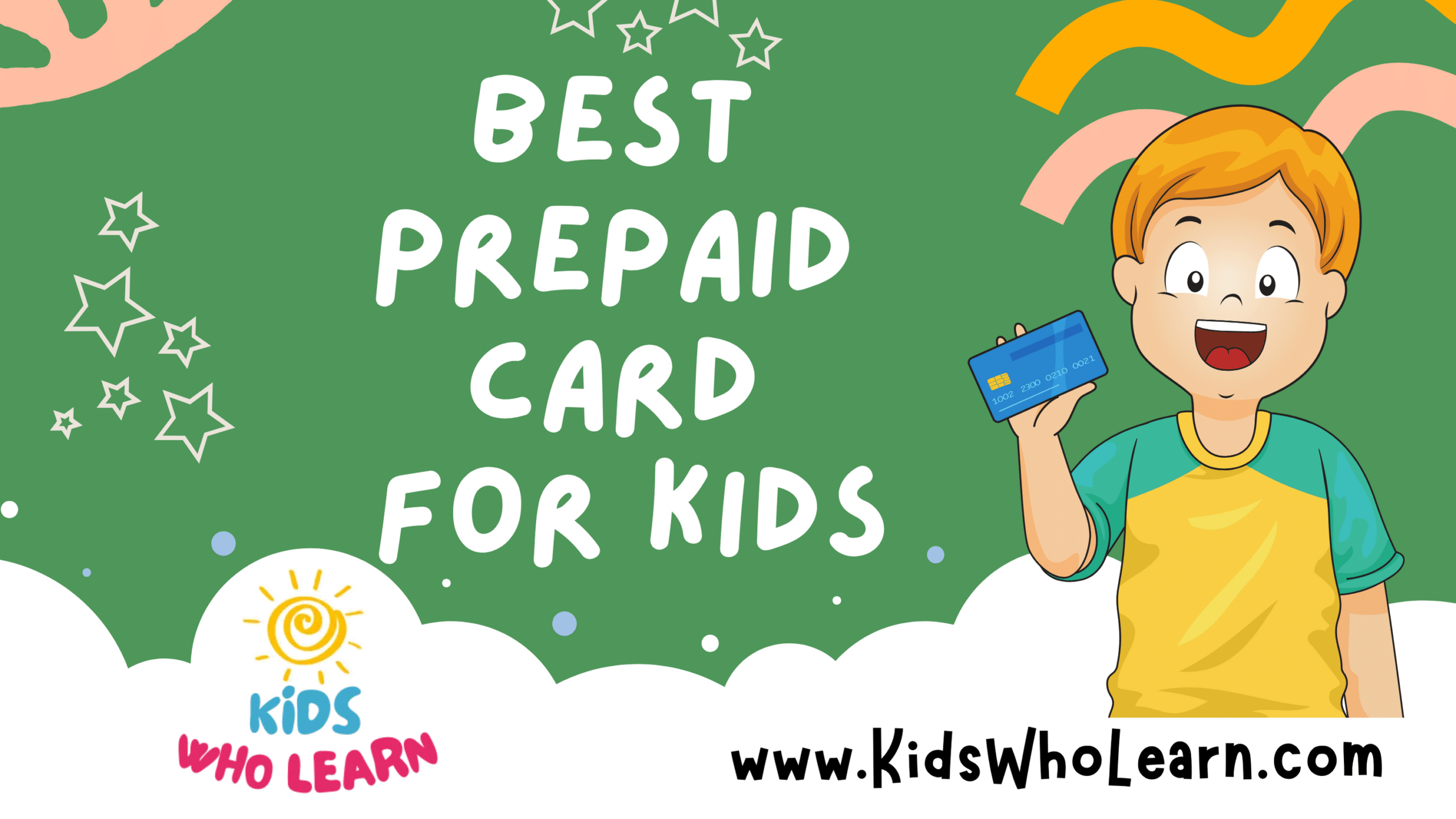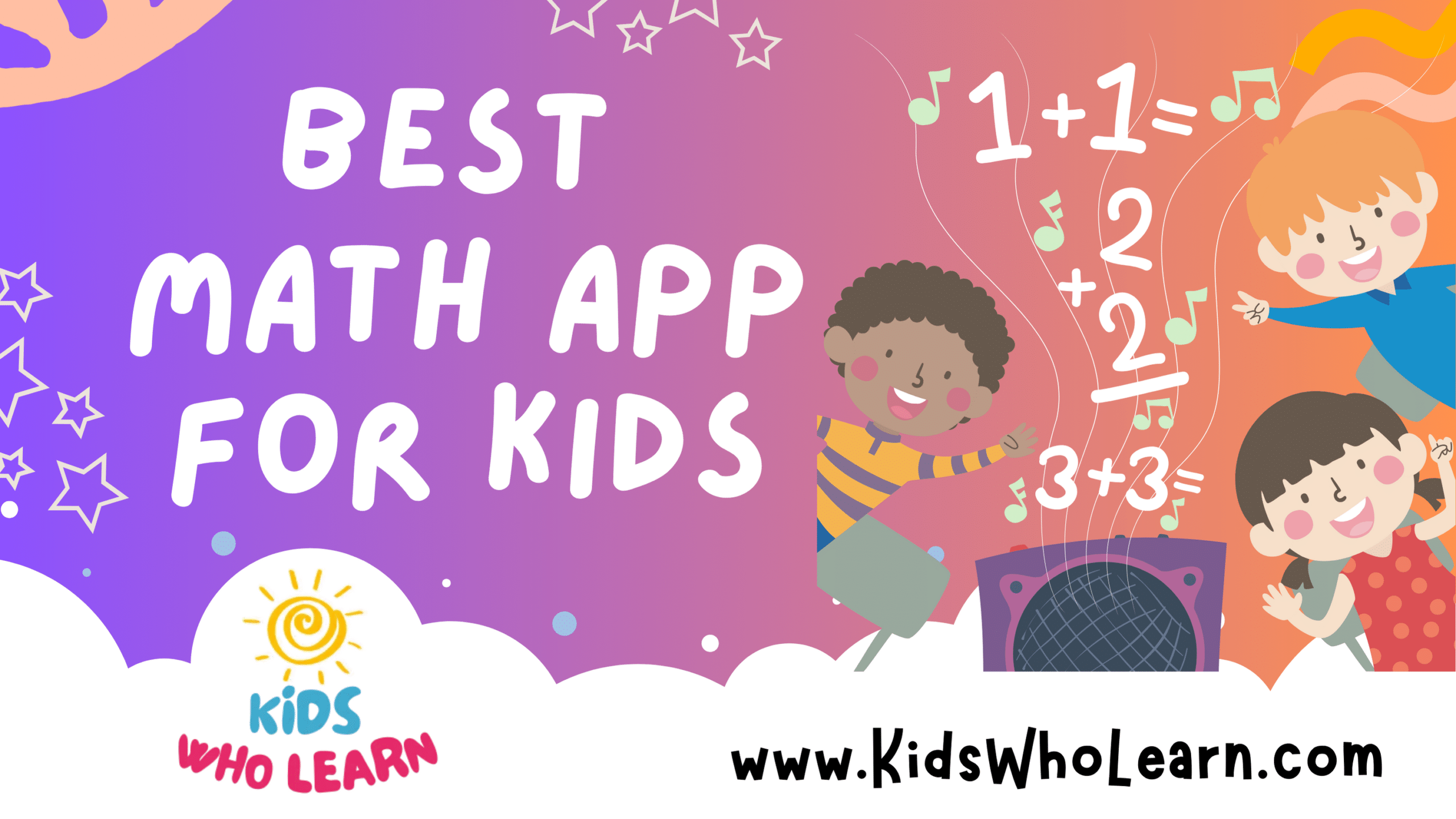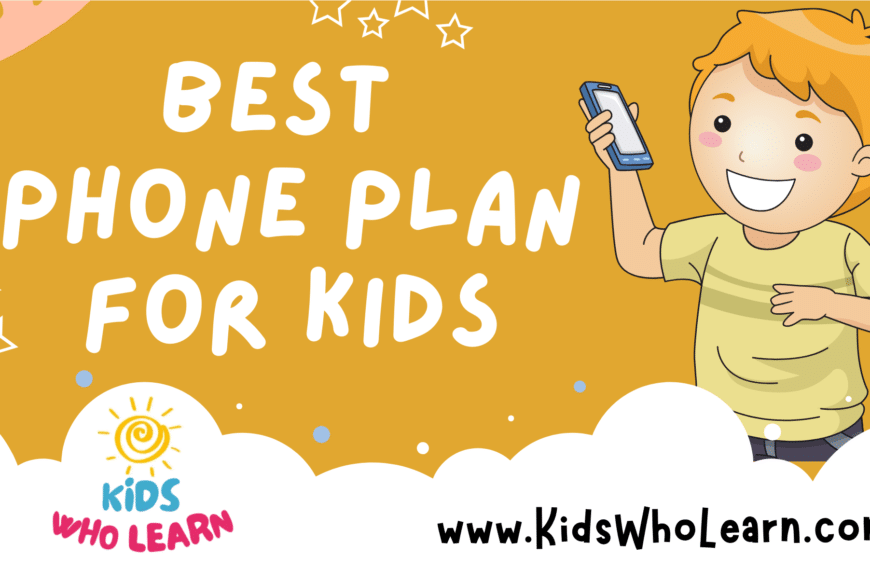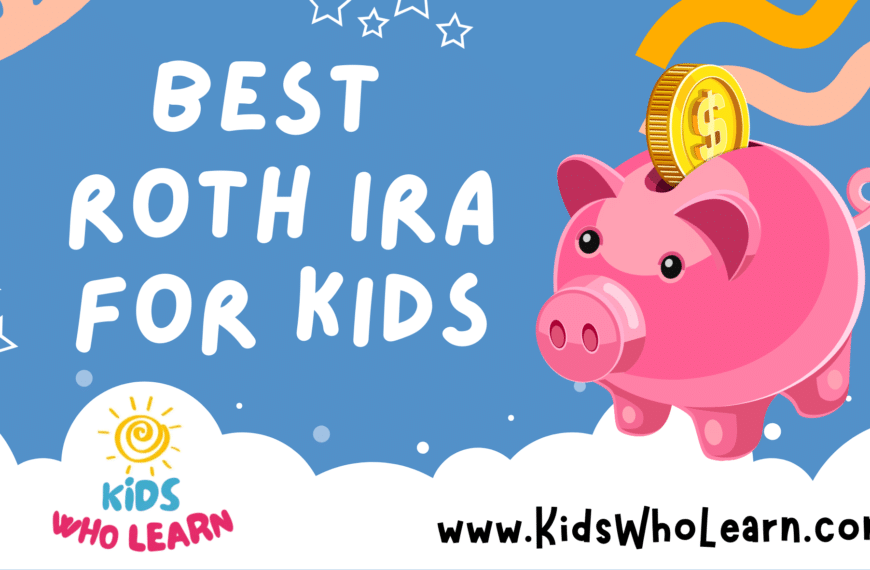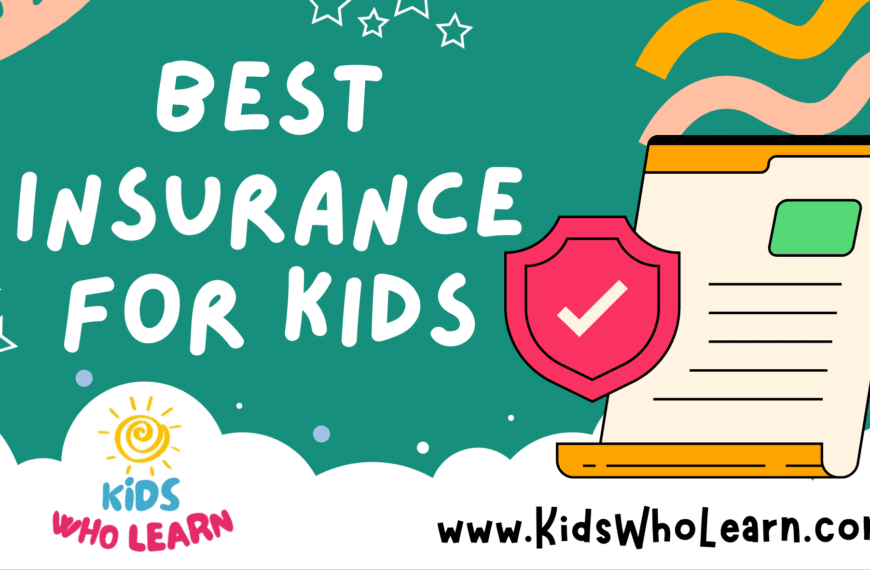As parents, we often find ourselves seeking the best financial tools to help teach our children about money management. Prepaid cards have emerged as a popular choice for providing kids with the opportunity to learn about spending and saving, all while under the safety net of parental controls. These cards offer a practical way for young ones to gain hands-on experience with funds, and they can serve as a building block towards fiscal responsibility.
We understand that each family’s needs are different when it comes to financial education and security. That’s why it’s important to evaluate the features and benefits of various prepaid cards designed for kids. Safety features, educational resources, and ease of use are critical elements to consider. By exploring the unique offerings and security measures of each card, we can ensure that we are providing not just a financial tool, but also a learning resource for our children.
Key Takeaways
- Prepaid cards provide hands-on financial education for kids with parental oversight.
- Safety features and educational resources are important when choosing a prepaid card.
- Personalizing the card experience to fit family values and needs is crucial.
Understanding Prepaid Cards for Kids
As we explore prepaid cards for kids, we must consider the essentials like what these cards are, their benefits, the role they play in financial education, and the appropriateness regarding age.
What Is a Prepaid Debit Card?
A prepaid debit card is a payment card that is typically issued by major credit card companies and is pre-loaded with a specific amount of funds. Unlike traditional debit cards, prepaid cards do not require a bank account and spending is limited to the card’s balance.
Benefits of Prepaid Cards for Kids
Prepaid cards for kids offer a secure way for them to handle money without the risk of overdraft fees or accumulating debt. Here’s how they stand out:
- Security: Lost or stolen cards can be easily replaced, and the financial impact is limited to the card’s balance.
- Control: We can monitor spending and set limits, ensuring responsible use.
- Convenience: Kids can use the cards for purchases online or in stores, wherever debit cards are accepted.
Financial Literacy and Education
Financial literacy is crucial, and by using a prepaid debit card, kids can learn about money management from an early age. These cards serve as practical tools for education on budgeting, saving, and spending responsibly.
Age Appropriate Financial Tools
When choosing a preloaded debit card for a child, it’s important to find one that matches their maturity level and financial understanding. Age-appropriate cards often come with tailored features such as:
- Customizable limits
- Educational resources suited to different age groups
- Parental controls that help guide the child’s financial decisions
By integrating prepaid cards into our kids’ lives, we equip them with valuable financial tools that can grow with them as they mature.
Top Picks for Prepaid Cards
In our selection of prepaid cards for kids, we prioritize security, ease of use, and educational value to ensure a blend of convenience and learning. We’ve investigated various options to bring you cards that stand out in their respective categories.
Best Overall Prepaid Card for Kids
The Greenlight Debit Card is our top choice for a well-rounded prepaid card. It combines robust parental controls with real-world financial education tools. The card operates on the Mastercard network, providing widespread acceptance along with features that help kids learn money management.
Best for Budgeting and Allowance
goHenry Debit Card shines when it comes to budgeting and allowance. It allows us to set weekly allowance transfers and spending limits. The goHenry app also encompasses tasks and chores feature, linking money to work ethic and responsibility.
Best for Educational Features
The FamZoo Prepaid Card is designed with educational features in mind. Not only does it act as a standard debit card on the Mastercard network, but it also offers an array of in-app educational resources to teach kids about saving, spending, and charitable giving.
Best for Teens
For older kids and teenagers, the Current Debit Card stands out. It’s a Visa card that offers a taste of financial independence with the safety of parental oversight. It has a sleek app interface and features geared towards teaching teens about budgeting and saving.
Prepaid Card Features and Considerations
When selecting prepaid cards for kids, we must prioritize features like parental control, easy fund transfers, and budgeting while perusing fee structures to ensure cost-effectiveness.
Parental Controls and Monitoring
Prepaid cards offer robust parental controls that allow us to track spending, block certain merchants, and set limits. These controls help us to monitor our kids’ spending habits and ensure they’re making safe financial decisions.
Ease of Adding Money and Direct Deposit
We look for options that support direct deposit and offer multiple channels for loading money onto the card. This convenience means we can seamlessly transfer allowances or wages from part-time jobs onto our kids’ prepaid cards.
Custom Budgeting and Savings Tools
Effective budgeting tools are integral to these cards, aiding kids in setting and managing their spending. We value features like setting savings goals and creating custom spending categories to educate them on financial responsibility.
Card Fees and Costs
Prepaid cards vary in costs, with some offering no monthly fee and others charging for various services. We analyze monthly fees, load fees, and other fees to ensure we’re getting a card with low fees overall, maximizing the value for our family.
By carefully considering these aspects, we equip our kids with not just a payment tool but a platform for financial education.
Financial Education Resources
In this section, we’ll explore essential resources aimed at enhancing children’s understanding of finance, covering investment basics, money management, and access to educational content.
Investing for Kids
When introducing kids to investing, we prioritize educational features that simplify the world of finance. Our recommended prepaid cards come with investment tools tailored for young learners. For instance:
- Investment Games: Interactive apps that simulate stock market scenarios.
- Guided Investment Options: Accounts where kids can watch their savings grow in real-world conditions, under parental oversight.
Money Management and Financial Responsibility
It’s crucial for kids to grasp the concepts of budgeting and financial responsibility early on. Our selected prepaid cards offer:
- Spending Limits: Parents can set specific limits to teach budgeting basics.
- Savings Goals: Encourage kids to save for goals and track progress visually.
- Real-time Notifications: Alerts for both parents and kids after every transaction, fostering awareness and responsibility.
Educational Content and Resources
Beyond just managing money, we believe in providing accessible educational content. Some features include:
- Financial Education Apps: Structured programs within card apps to teach money principles.
- E-Learning Modules: Bite-sized lessons covering budgeting, saving, and investing basics.
We ensure these resources merge financial education and practical application to offer a holistic learning experience.
Safety and Security
When selecting prepaid cards for kids, it’s essential we focus on features that ensure financial safety and controlled spending. Let’s examine how FDIC insurance provides account safety and the importance of spending controls and limits for young cardholders.
FDIC Insurance and Account Safety
Prepaid cards affiliated with banks that are FDIC insured offer a significant layer of protection. This means that if the bank holding the prepaid funds fails, our child’s money is safe up to the applicable limits. It’s imperative:
- FDIC Insured: Funds are protected up to $250,000 per depositor, per institution.
- Account Safety: Robust security measures are in place to guard against unauthorized transactions.
Spending Controls and Limits
Effective spending controls can mitigate risks and promote financial responsibility. As we provide our kids with these tools, we must consider:
- Controls: Ability to set specific spending limits, limiting the risk of overspending.
- Limits:
- Daily Limits: Set a maximum amount that can be spent each day.
- Transaction Limits: Restrict the size or type of transactions allowed.
Ensuring the prepaid card has spending controls in place allows us to restrict funds to authorized users only, providing peace of mind that our child’s spending stays within the boundaries we set.
Additional Considerations
When exploring prepaid cards for kids, it’s crucial to examine the finer details that affect daily use and overall convenience. We focus on accessibility, cost-efficiency, and support to equip families with comprehensive knowledge for an informed decision.
ATM Access and Cash Reload Options
Access to ATMs and ease of cash reloads are pivotal. We recommend looking for prepaid cards that offer:
- Free ATM access within a broad network
- Multiple cash reload locations
Cards with wide ATM networks can minimize fees and increase convenience, especially if your child needs quick access to cash.
Family Billing and No Fee Alternatives
To manage finances effectively, consider prepaid cards that foster:
- Family billing options, streamlining expenses under one account
- No fee policies for everyday transactions
This can include zero charges for maintenance, reloading, or monthly use, aiding in controlled spending without surprise fees.
Customer Support and Financial Institution Trust
Reliable customer service and reputable financial institution backing are essential. Ensure:
- The institution offers responsive support channels, including phone, email, or chat.
- You can easily cancel the card if lost or stolen.
Trust is established when the issuing institution maintains transparency about foreign transaction fees and other potential costs.
Special Features and Exclusive Benefits
In assessing the optimal prepaid cards for kids, we find that special features and exclusive benefits often tip the scales. We focus on cards that offer tangible rewards for families and teens, ensuring these financial tools are not just spending platforms but also provide learning experiences.
Cash Back and Rewards Programs
- Cash Back: Some prepaid cards offer cash back on purchases, providing a percentage of spending back to the card’s balance. For instance, both Greenlight and FamZoo offer programs where kids can earn cash back on their spending, teaching them the value of rewards for smart shopping.
- Rewards Programs: Cards like BusyKid integrate chores and allowances with the potential to earn bonuses, making financial responsibility more appealing to teens.
Gift Card and Special Occasion Features
- Gift Card Options: Certain prepaid cards allow kids to receive gift cards from major retailers as part of a rewards system, adding a level of excitement to personal finance.
- Special Occasion Tools: We see that services such as gohenry provide unique features where family members can send money as gifts for birthdays or other special occasions directly through the app.
Unique Benefits for Families and Teens
- Family Billing: Family-centric cards often include the option for one bill for all family accounts, simplifying management for parents. The Greenlight card is an excellent example of this feature.
- Benefits for Teens: For teenagers, features aimed at independence like the ability to manage their own budgets and track spending in real-time are crucial. Cards designed for teens often have higher limits and fewer restrictions compared to those for younger children.
- Educational Components: Moreover, these cards frequently come with educational resources to help teens understand personal finance, such as the educational app offered by BusyKid.
Making the Choice
When selecting the best prepaid debit cards for kids, it’s crucial to focus on how the card will support their financial literacy and align with their spending needs.
How to Evaluate The Best Card for Your Child
To ensure you’re choosing the right card, consider these specific aspects:
- Fees: We look for cards that minimize or eliminate common fees, such as monthly maintenance, reload, and ATM withdrawal fees.
- Parental Controls: We prioritize options that allow us to monitor and control our children’s spending.
- Educational Resources: Cards that provide financial education tools give our kids an edge in developing financial literacy.
- Limits: We assess whether the card limits are appropriate for our child’s age and spending habits.
- Ease of Use: The card should be accepted widely and offer a user-friendly interface.
- Customer Service: Reliable customer support is vital for addressing any issues that may arise.
- Rewards and Incentives: Although not always necessary, rewards can motivate kids to learn money management.
Here is a bridged comparison to guide us:
| Criteria | Pros | Cons |
|---|---|---|
| Fees | No monthly fees | High ATM fees |
| Parental Controls | Real-time notifications and spending limits | May be too restrictive for teens |
| Educational Resources | Interactive financial learning tools | Limited on some cards |
| Limits | Adjustable according to child’s needs | Too high or too low for some |
| Ease of Use | Widely accepted, easy reloads | Some may not work internationally |
| Customer Service | 24/7 support available | Varies considerably by provider |
| Rewards | Encourage good spending habits | Can lead to overspending |
By assessing these areas, we can confidently select a prepaid debit card that will help our kids learn and grow financially.
Alternatives to Prepaid Cards
While prepaid cards come with benefits, we recognize that they aren’t the best fit for everyone. We will explore checking accounts aimed at young users and credit cards used for educational purposes, each bringing different advantages to financial literacy and management.
Checking Accounts and Bank Alternatives
Checking accounts offer a traditional banking experience with added oversight features for minors. For example, many banks offer youth-oriented checking accounts. These accounts cater to under-18 users with parental control options. They often come with no or low fees and provide a safe environment for kids to learn about account management. A notable choice is the American Express Serve, a prepaid debit account with low fees and easy online management tools, although eligibility might entail a credit check.
- Features of youth checking accounts often include:
- Parental monitoring: Monitor account activity.
- Direct deposit: For allowances or paychecks.
Bank alternatives, such as online financial platforms, allow for easy transfers and account supervision. PayPal Prepaid Mastercard is a notable example, offering easy loading options and parental control, albeit with different fee structures than traditional banks.
Credit Cards as Teaching Tools
Credit cards—often perceived with caution—can serve as powerful tools for teaching financial responsibility when used appropriately. Some credit cards are available to minors as authorized users on their parents’ accounts, which allows parents to track purchases and set limits. It’s a practical way to introduce them to credit before they’re eligible for their own.
- Benefits of using credit cards for kids include:
- Building credit history: Early introduction to credit.
- Controlled spending: Set limits to manage finances.
It’s important that we select cards without annual fees and with clear terms. Cards like the American Express family-oriented products may offer flexibility and benefits suitable for youngsters learning to manage credit. Keep in mind, while no credit check is required to be added as an authorized user, the primary cardholder’s credit may be affected by the added responsibility.
Getting Started
Before we dive into the specifics, it’s essential to understand that setting up a prepaid card account for your child or teen can be both simple and beneficial. By taking the right steps, we can teach them valuable financial habits early on.
Setting Up Your Prepaid Card Account
To get started with a prepaid debit card for your child or teen, we’ll first need to select a provider. FamZoo and Copper are excellent options tailored for families, offering easy setup and parental controls. Here’s a quick guide to setting up the account:
- Choose a Card Provider: Research and select a prepaid card provider that meets your family’s needs.
- Sign Up for an Account: Complete the sign-up process, which typically involves providing some basic personal information.
- Activate the Card: Once you receive the card, activate it following the provider’s instructions.
- Load Funds: Link your own debit card or bank account to transfer funds onto the prepaid card.
- Set Controls: Use the provider’s app or website to set spending limits, track purchases, and lock the card if necessary.
Teaching Your Child or Teen Financial Habits
After setting up the prepaid card, it’s crucial we teach our children and teens how to manage their money responsibly. Utilize Mazoola for its focus on money management skills and financial education. Consider these steps to guide them:
- Budgeting: Explain the importance of budgeting. Help them allocate their funds for different purposes like saving, spending, and giving.
- Tracking Expenses: Show them how to keep track of their spending. Most prepaid card apps offer tools for this purpose.
- Goal Setting: Encourage setting financial goals, such as saving for a desired item or event.
- Financial Education: Provide resources or lessons on financial topics relevant to their age, from basic money concepts for younger children to more complex topics like interest rates for high school students.
By taking these proactive steps in setting up prepaid cards and teaching financial habits, we’re offering our child or teen a practical education in money management that will serve them well into adulthood.
Frequently Asked Questions
We cover essential details about prepaid cards for kids, focusing on top-rated options, important features, benefits, age-specific differences, educational choices, and parental controls.
What are the top-rated debit cards designed specifically for teenagers?
Our research shows that the Greenlight card, the gohenry card, and the Current card rank highly among prepaid debit cards tailored for teens. These cards combine ease of use and features that cater to both parents and youngsters.
What features should I look for in a good prepaid card for children?
A good prepaid card for your child should include real-time transaction notifications, spending controls, educational resources about money management, and low fees. Feature sets vary, so we advise choosing a card that aligns with your family’s financial education goals.
What are the benefits of providing my teen with a prepaid debit card?
Issuing a prepaid debit card to your teen can instill financial responsibility, provide convenient money management, and ensure a safe spending limit. These cards usually block inappropriate merchants, making them a secure option for a young spender.
How do prepaid debit cards for kids under 13 differ from those for older teens?
Prepaid cards for kids under 13 often have more stringent parental controls and simpler interfaces compared to those for older teens. They tend to focus more on educational content, ensuring that younger children can start learning about financial literacy in a protected environment.
What are some safe and educational prepaid card options for young children?
For younger children, the FamZoo and BusyKid prepaid cards are notable for their focus on safety and education. They offer a platform for children to earn, save, spend, and learn about money under their parents’ guidance.
Which prepaid card apps offer robust parental controls for monitoring child spending?
Parental control features are robust in apps like Greenlight and gohenry, allowing parents to track and control spending, set chores and allowance, and even match savings. These tools help parents teach financial accountability and budgeting practices effectively.

